The College Economy: Educational Differences in Labor Market Outcomes
Rajashri Chakrabarti, Thu Pham, Beckett Pierce, and Maxim Pinkovskiy

It is intuitive that workers with higher levels of education tend to earn more than workers with less education. However, it is also true that workers with more education are much more likely to be employed, and this employment advantage of education has, if anything, grown in recent years. In this post, we document profound differences in labor market outcomes by educational attainment. Drawing on the Economic Heterogeneity Indicators, we find that the gap in employment rates between workers who have completed college and workers who have not is 12 percentage points—which is larger than the employment gaps between workers of different races/ethnicities or between men and women—and is wider than the pre-pandemic gap. Moreover, most of this gap and its recent movements are driven by differences in labor force participation rates rather than by differences in unemployment rates. Fostering higher labor force participation of workers without a college degree thus would be quite helpful in promoting maximum employment.
Veterans in the Labor Market: 2024 Update
Rajashri Chakrabarti, Dan Garcia, and Maxim Pinkovskiy
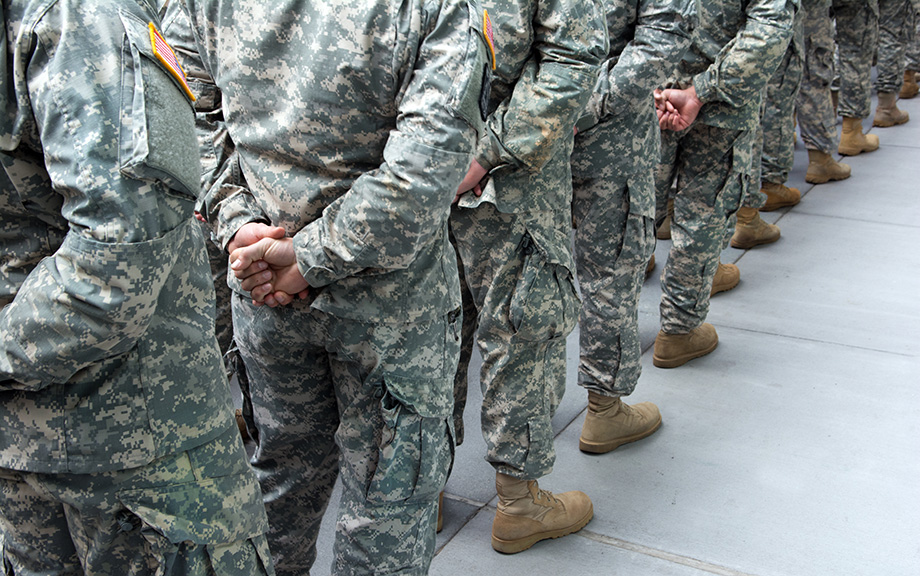
Veterans constitute a significant segment of the male labor force, and understanding labor market disparities between veterans and non‑veterans is an important component of studying disparities in the economy as a whole. In a previous Liberty Street Economics post, we have shown that even relative to a group of comparable non-veterans, veterans have lower employment and labor force participation rates. One year later, we see that veterans continue to experience lower labor market attachment and the employment gap has widened, though the earnings gap has closed.
Recent Disparities in Earnings and Employment
Rajashri Chakrabarti, Kasey Chatterji-Len, Dan Garcia, and Maxim Pinkovskiy

The New York Fed recently released its latest set of Equitable Growth Indicators (EGIs). Updated quarterly, the EGIs continue to report demographic and geographic differences in inflation, earnings (real and nominal), employment, and consumer spending (real and nominal) at the national level. This release also launches a set of national wealth EGIs (which will be examined more closely on Liberty Street Economics early next year). Going forward, EGI releases will also include a set of regional EGIs, which will present disparities in inflation, earnings (real and nominal), employment, and consumer spending (real and nominal) in our region. Drawing on the just released EGIs, in this post, we present recent gender gaps in the labor market at the national and regional levels. We provide a picture of how gender wage and employment disparities have evolved since the pandemic, examining and contrasting gaps at the national and regional level. We find that the gaps between the employment rates and earnings of men and women have declined steadily following the pandemic, but have declined perceptibly more so in our region than in the nation.
The EGIs: Analyzing the Economy Through an Equitable Growth Lens
Rajashri Chakrabarti, Dan Garcia, and Maxim Pinkovskiy

Inflation remains elevated, labor markets are close to the strongest they have been, real consumption is up year-over year, but all of these observations are with respect to averages. Behind these macroeconomic trends can be widely varying experiences across different demographic and socioeconomic groups that make up our society. To provide researchers, practitioners, and the public with timely, regularly updated and comprehensive answers to these questions, we launched the Equitable Growth Indicators (EGIs)—a new tool to help foster the evolving discussion about economic inequality and equitable growth. To illustrate the utility of the EGIs, we provide examples of some striking differences in trends captured in the May release of the EGIs on inflation, real earnings, and real spending. More heterogeneity analysis and data are available at nyfed.org/egi.
Do Veterans Face Disparities in the Labor Market—And What Accounts for Them?
Rajashri Chakrabarti, Dan Garcia, and Maxim Pinkovskiy
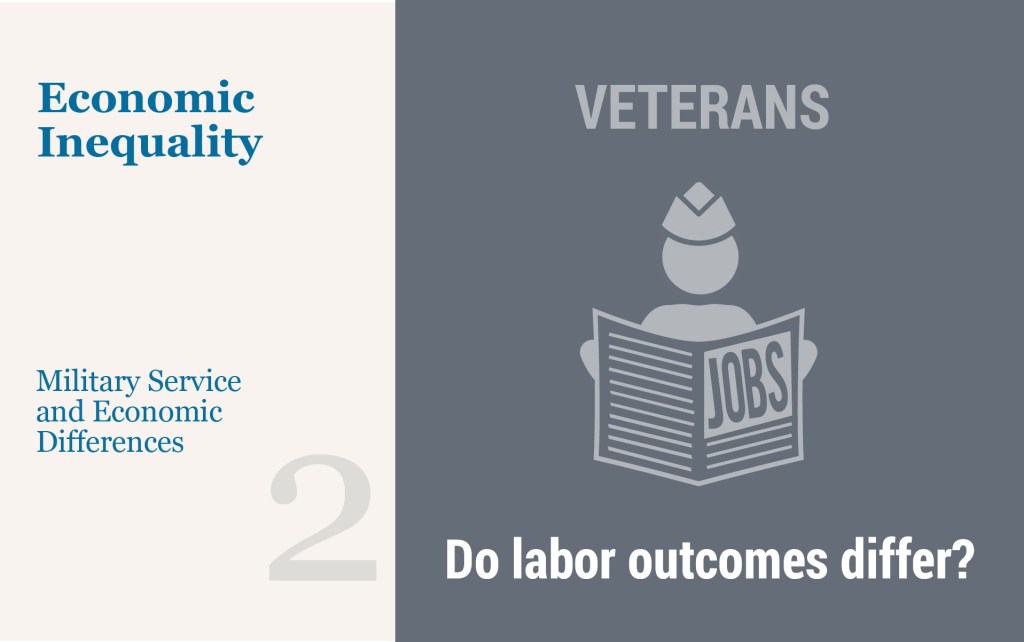
We continue our series on military service and consider veterans’ earnings and labor market outcomes. We find that veterans earn more than 12 percent less and are 4 percentage points (18 percent) more likely to be out of the labor force than comparable nonveterans. Interestingly, accounting for veterans’ differences from comparable nonveterans in terms of education and disability status largely explains these labor market differences.
Do Veterans Face Disparities in Higher Education, Health, and Housing?
Rajashri Chakrabarti, Dan Garcia, and Maxim Pinkovskiy
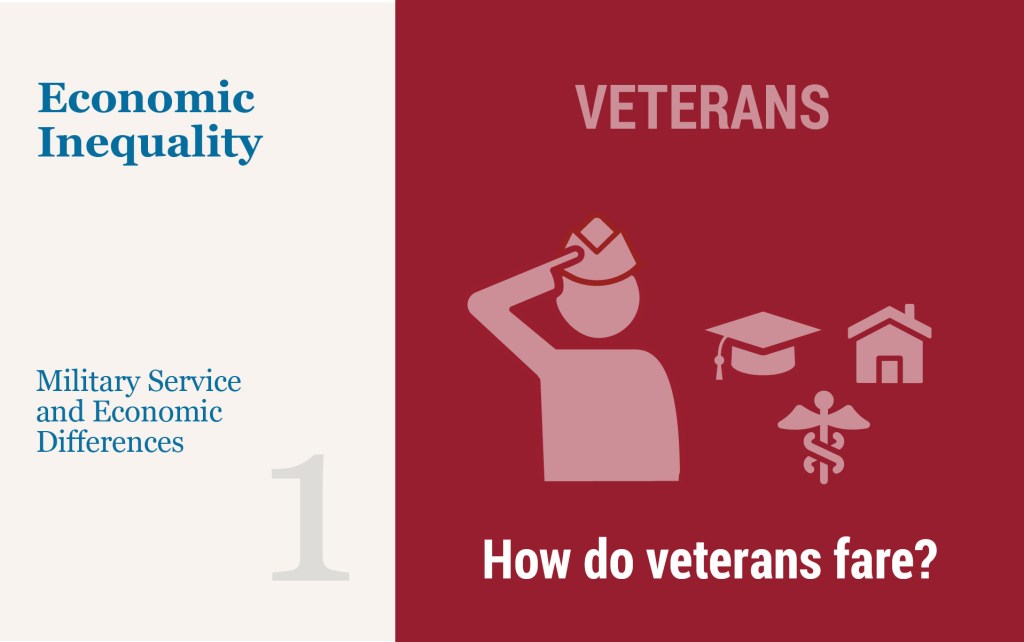
Veterans are an understudied group that forms an important part of the fabric of American society and that constitutes a significant segment of the population. In the first post of this two-part series, we will investigate how the outcomes of veteran men–in educational attainment, health, and housing–differ from those of comparable men who did not serve in the military. Looking only at men, for reasons described below, we find that relative to nonveteran men with a high school degree and a similar distribution of demographic and geographic characteristics, veterans are 7 percentage points less likely to have a college degree and are over 50 percent more likely to experience a disability. Veterans are also somewhat likelier to rent a home than to own and, as renters, pay a lower average rent, suggesting they experience lower quality housing or live in worse neighborhoods.
Rural Households Hit Hardest by Inflation in 2021‑22
Rajashri Chakrabarti, Dan Garcia, and Maxim Pinkovskiy
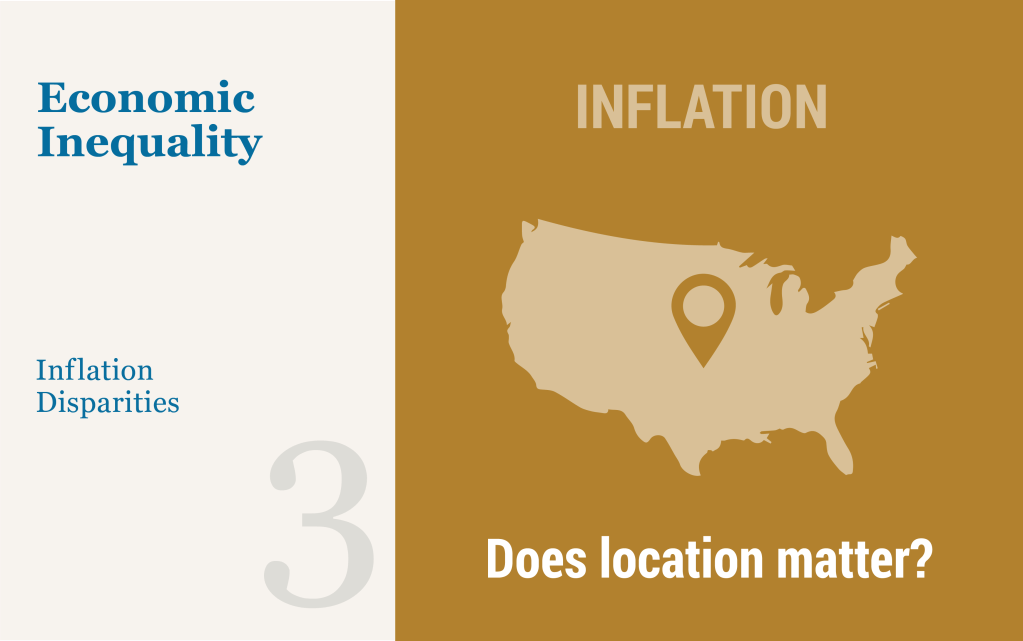
To conclude our series, we present disparities in inflation rates by U.S. census region and rural status between June 2019 and the present. Notably, rural households were hit by inflation the hardest during the 2021-22 inflationary episode. This is intuitive, as rural households rely on transportation, and especially on motor fuel, to a much greater extent than urban households do. More generally, the recent rise in inflation has affected households in the South more than the national average, and households in the Northeast by less than the national average, though this difference has decreased in the last few months. Once again, these changes in inflation patterns can be explained by transportation inflation driving a large extent of price rises during 2021 and much of 2022, with housing and food inflation lately coming to the fore.
Young, Less Educated Faced Higher Inflation in 2021—But Gaps Now Closed
Rajashri Chakrabarti, Dan Garcia, and Maxim Pinkovskiy
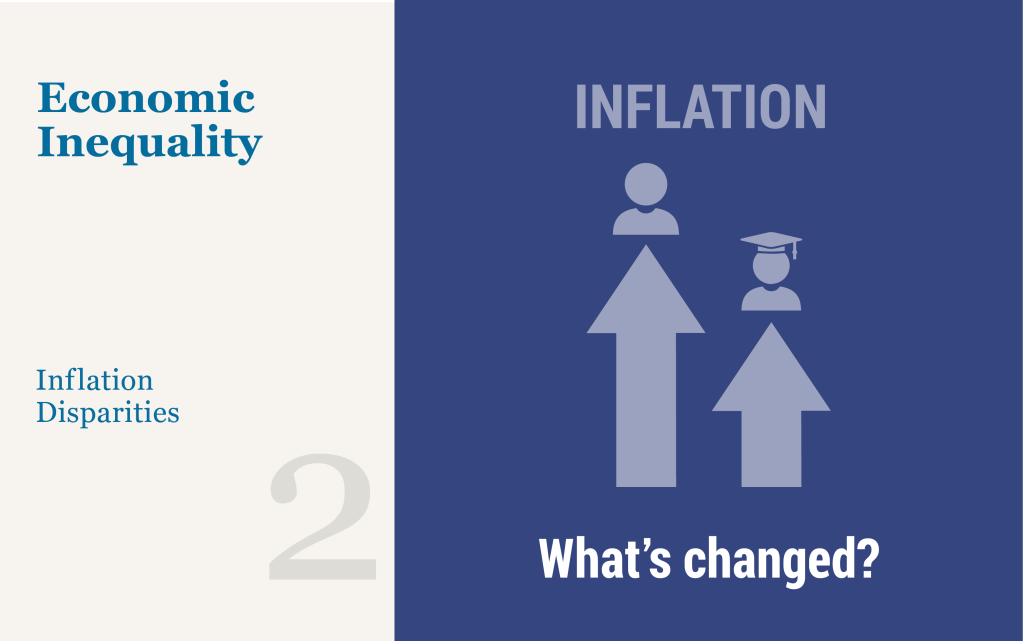
We continue our series on inflation disparities by looking at disparities in inflation rates by educational attainment and age for the period June 2019 to the present. Remarkably, we find that disparities by age and education are considerably larger than those by income and are similar in size to those by race and ethnicity, both explored in our previous post. Specifically, during the inflationary period of 2021-22, younger people and people without a college degree faced the highest inflation, with steadily widening gaps relative to the overall average between early 2021 and June 2022, followed by a rapid narrowing of the gaps and a reversal of some of them by December 2022. This pattern arises primarily from a greater share of the expenditures of younger people and people without a college degree being devoted to transportation—particularly used cars and motor fuel—which led the 2021 inflationary episode but has since converged to general inflation.
Inflation Disparities by Race and Income Narrow
Rajashri Chakrabarti, Dan Garcia, and Maxim Pinkovskiy
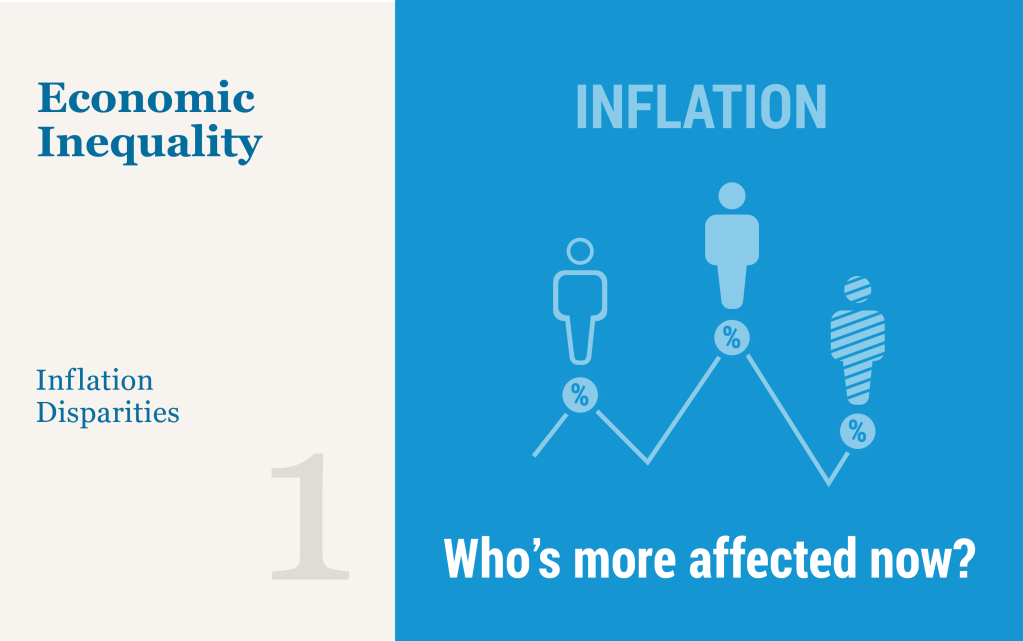
As inflation has risen to forty-year highs, inflation inequality—disparities in the rates of inflation experienced by different demographic and economic groups– has become an increasingly important concern. In this three-part blog series, we revisit our main finding from June—that inflation inequality has increased across racial and ethnic groups—and provide estimates of differential inflation rates across groups based on income, education, age, and geographic location. We also use an updated methodology for computing inflation disparities by focusing on more disaggregated categories of spending, which corroborates our earlier findings and substantiates our conclusion that inflation inequality is a pronounced feature of the current inflationary episode.
How Have Racial and Ethnic Earnings Gaps Changed after COVID‑19?
Rajashri Chakrabarti, Kasey Chatterji-Len, Daniel Garcia, and Maxim Pinkovskiy
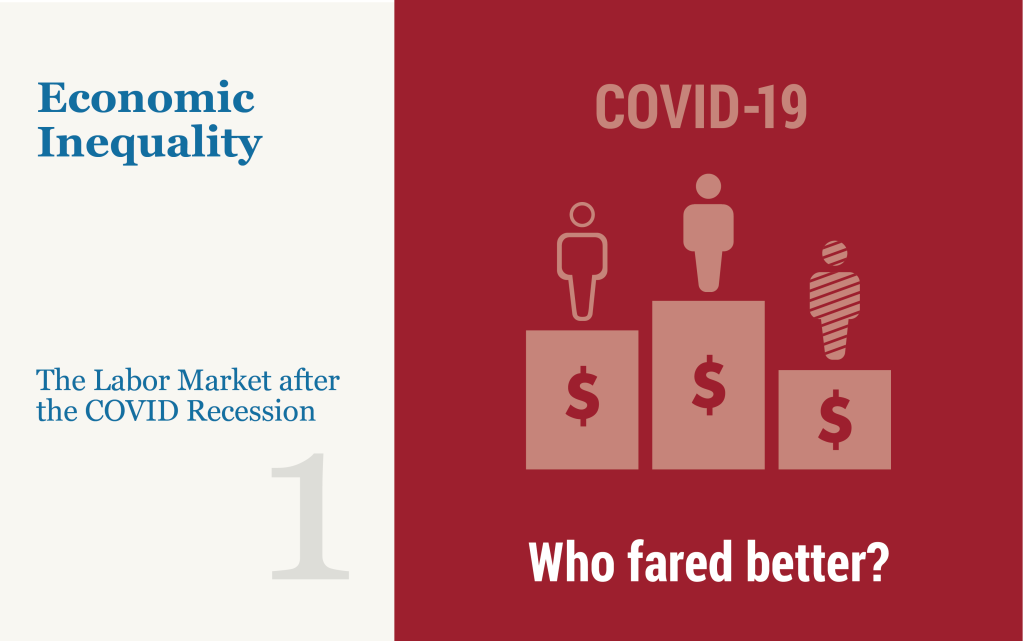
Racial and ethnic earnings disparities have been salient features of the U.S. economy for decades. Between the pandemic-driven recession in 2020 and the rising inflation since 2021, workers’ real and nominal earnings have seen rapid change. To get a sense of how recent economic conditions have affected earnings disparities, we examine real and nominal weekly earnings trends for Asian, Black, Hispanic, and white workers. We find that average real weekly earnings have been declining in the past year, but less so for Black and Hispanic workers than for white and Asian workers. Black and Hispanic workers have also experienced small increases in real earnings since the pre-pandemic period.










 RSS Feed
RSS Feed Follow Liberty Street Economics
Follow Liberty Street Economics